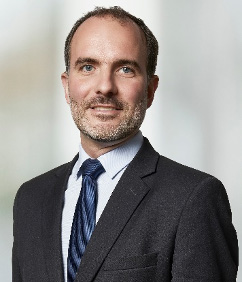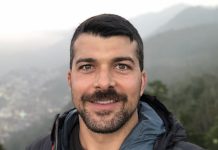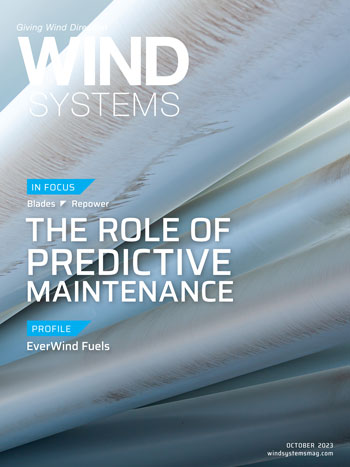Vaisala, a global leader in weather and environmental measurement and monitoring solutions for the renewable energy industry, recently named former GE Renewable Energy’s strategy head, Alexis Crama, as its vice president — weather and environment. Wind Systems recently talked with Crama about what he will bring to the table when it comes to the future of wind energy.
As vice president — weather and environment at Vaisala, what will be your duties?
I would say my duty is to bring all the product and industrial growth experience I have out of 17 years spent in renewable energy — mostly in wind — and help the company grow in the energy and energy transition segment. That’s really the primary reason of me being there.
How has your background prepared you for this position?
I am an engineer in aerospace, and I have a business degree as well. That’s my core foundation. But mostly my 17 years of experience in renewable energy with wind rotor and wind turbine suppliers where I occupied functions within industrial planning, strategy, business development, general management, and more are important as well.
Within GE Renewable Energy, I spent time going beyond the wind key components at the wind turbine supply chain system level, expanding into the hydro components, grid system, grid automation, grid digital, Power-to-X, and also solar hybrid storage systems.
I would say I have a very strong and robust wind experience — from product to supply chain, and markets and end users, and also a solid experience within the broad field of energy transition with all power generation assets and infrastructure.
My experience and background help me to understand where to focus and what good things need to be developed for the industry.
How will you help expand Vaisala and its support of a global energy transition?
Vaisala has a really strong tradition of developing extremely accurate and reliable products along with robust industrial processes delivering sensors as well as digital solutions at scale to serve meteorology and aviation and some “in-factory” industrial businesses. That’s a good core foundation to build on with what I bring from the energy business.
There is a nice complementary aspect of trying to suit this with new market needs in the fast-growing solar market as well as with wind systems to improve the performance of assets, to develop new farms with lower cost of capital, lower risk, and being able to offer a suite of sensors that deliver high accuracy, high availability, and high reliability. We also want to help investors and asset managers to develop faster and improve their portfolios. That’s basically what I think Vaisala and I, with my background, can help do in the business and, at the end, grow Vaisala and bring value to our customers.
What about Vaisala most excites you about its clean energy initiatives?
There are different product lines, first of all. There are traditional sensors for wind measurement, with air stations with temperature pressure, humidity visibility, and gas measurement. There is a robust lidar product line that has been the result of an acquisition recently, which leverages the Lidar technology, the laser technology, to literally visualize the wind at different horizons depending on the application. You have all these suites of sensors on top where you can add digital treatments to integrate that data and process it in a way that can be exploited into a SCADA system and control system, and Vaisala brings both hardware systems and digital integration to help make a new integrated solution for customers.
This deep tech element is really exciting. The amount of experts with Ph.Ds in science and very experienced engineers in this domain is really exciting, too. The opportunity to decarbonize the world with a massive transition into electrification and into decarbonization of transportation is really creating a context of an exciting blue ocean type of strategy. That includes partially continuing what we have been doing in Vaisala by accelerating in wind and solar but also with grid management, in storage on an industrial scale, and in other applications on the side of energy.
Tell us more about Vaisala’s measurement monitoring and forecasting solutions and your goals to further advance or promote them.
Vaisala has so far focused on general weather forecasting with multiple application space.
We’ve been focusing mostly on assets development. So, for wind farms, a lot of focus has been on wind resource assessment for new wind-farm development. There also has been some development in measurement resource stations for solar farm development. These are early-stage projects, steps in projects lifecycle, and that has been the bulk of our activities, and we have developed knowledge and expertise in doing so. I think now stepping back and bringing my expertise, the important thing is to look at the entire product lifecycle of the wind farm, solar farm, industrial storage, and grid system, so at the development planification stage, we can bring data to optimize the location and the type of assets an investor will want to put at a certain location.
But during construction, we can have solutions to optimize the weather risk and basically install wind turbines more efficiently, because you have to lift the assets. You cannot do that in a harsh weather environment, but if you can provide more accurate weather data, you can more efficiently build.
Then you have the commissioning of your assets, solar farm, wind farm, and eventually storage, where you validate the promise of your supplier per the expectation. You measure the exact wind or solar resource; you measure what your renewable energy asset is delivering; you compare the gap, and you see if it’s compliant, if there are some warranty issues, some compensation, or some additional engineering tuning to perform to close that gap. Then during the entire asset management, having some accurate weather sensors and digital forecast solutions will help you gain some additional percentage of annual energy production. By pitching your blades more accurately and more dynamically, you harvest a single gust of wind coming not foreseen before or you can optimize the fatigue loads of your turbine. You can really try to extract the most wind from your wind farm.
With a large offshore wind farm, unforeseen side gusts can be seen coming from a WindCube scanner. That allows us to look approximately 15 kilometers around and see 10 to 15 minutes ahead where the side wind is coming from. You have the main wind, and you have side wind, and then you can make certain turbines harvest some of this power, which normally would not have been. All this optimization along with the wake management is something that is not really fully exploited today. We are providing instrument measures to better understand that and help to close the loop and improve the control system. That’s really going to deliver higher annual energy production. You can also optimize and retrofit wind farms if you better understand your assets. You can see that maybe you can put larger rotors on existing turbines. You can do your servicing more efficiently during times of maintenance, especially at sea and offshore.
You can better plan your maintenance activities when the weather can allow it safely. At the end of the asset’s life, when you can have all the weather measurement data, you can better understand if that particular site is better off having an extended life of existing assets or if you are better off dismantling and repowering with new units. It’s really from early-stage investment until retirement of your assets, that is procuring a new field of application for a Vaisala solution. But today we are only at the early stages. There are multiple new phases to exploit where we can work with our utility customers, IPPs, asset owners, and OEM manufacturers to really make a positive difference in their businesses.
What are some of your specific wind energy related plans with Vaisala?
We are working on a new digital portal that will help to better manage the assets, like the sensors and the Lidars that we sell. This will help to integrate the data in the cloud, and also visualize the data so customers have the full end-to-end solution. All this digital play is basically a way for us to structurally integrate with the data and process it remotely so that it can be integrated into a cloud. Vaisala has lots of expertise and knowledge in weather forecasting and weather modeling, on top of which we have good artificial intelligence expertise. By having our own models, it’s a smart way to apply artificial intelligence and the most powerful set of data because we have the largest global network of sensors. When you put that all together, you can get an amazing set of data that can really help tap into an unknown, so far, of extremely accurate weather solutions, the current cast, the historic data, and the forecast.
We are living in a world of optimization and artificial intelligence for multiple applications. To apply optimization and artificial intelligence, you need accurate, reliable, and smart data, and what Vaisala is going to do is deliver all the weather and environment-related smart data. That’s digital play. From the sensor to this digital layer, it will enable our customers to exploit this data even better.
Where do you see the future of the wind industry, and how can Vaisala push its advancement in the U.S. and abroad?
I think wind has been growing a lot with an overall modest growth in the last few years — except in China, which experienced a surge in demand recently. But if we split the world from China, which is massive — I mean it’s more than half of the global demand for wind, but there are big swings, which sometimes affects the numbers. If I look at the world without China, the wind is growing still at about a 5 percent growth rate year over year onshore. But there’s a 20-plus percent growth in offshore. That’s good trends for electrification.
However, the trends are way off in terms of fulfilling the Paris Agreement to try to limit the global warming at 1.5 degrees by the end of the century. Therefore, in reality, we will need to at least double the amount of investment for electrification. That gives the idea of the potential that still exists for additional incremental growth in the short and midterm.
On top of this increased electrification, what we see is a decarbonization of other industries like transportation, steel making, and petrochemical. This is where we see an emerging green hydrogen economy that is at the extremely early stage today, which will probably be larger by 2030 and become massive past that date. That is an additional layer of growth for wind and solar because basically for 1 megaton of green hydrogen, you need at least 12 GW of wind power capacity installed. We will need, depending on the scenario we see, a conservative estimate of 250 megatons of green hydrogen by 2035.
In the most optimistic scenario, we can go up to 600 or 700 megatons per year. It really says that we are on the growth path, multiplying by two this renewable energy investment for electrification, and we can potentially multiply by four to five if we integrate the green hydrogen needs. That’s an extremely high perspective and very encouraging for us. Of course, you can do that by deploying more supply chain but also pulling more financing. To have efficient financing, you need to lower the risk so you can reduce the cost of capital, and to lower that risk, you need to deliver better weather forecasting for this intermittent wind resource. That’s what Vaisala is contributing to do: supplying extremely accurate and reliable weather observation, monitoring, and forecast data to its customers.
Is there anything else you’d like to mention that we didn’t talk about?
Beyond our sensors, our Lidar lines are developing fast and there are still applications and use cases that have not been used a lot so far, especially our scanning Lidar that allows to visualize wind. It is really an untapped potential for customers in terms of application to monitor wakes at a wind farm or to even install in some boats for smarter and safer operation at sea for offshore wind.
By better controlling the minutes and seconds of wind and solar, you can better balance your grid, lower the risk, and lower the amount of investment. If you look at the hundreds of billions of investments in the grid today, there is not much done on weather forecasting within the grid environments.
That’s something I’d like to insist that Vaisala could bring a lot in this enormous grid management market.
More info www.vaisala.com/en































